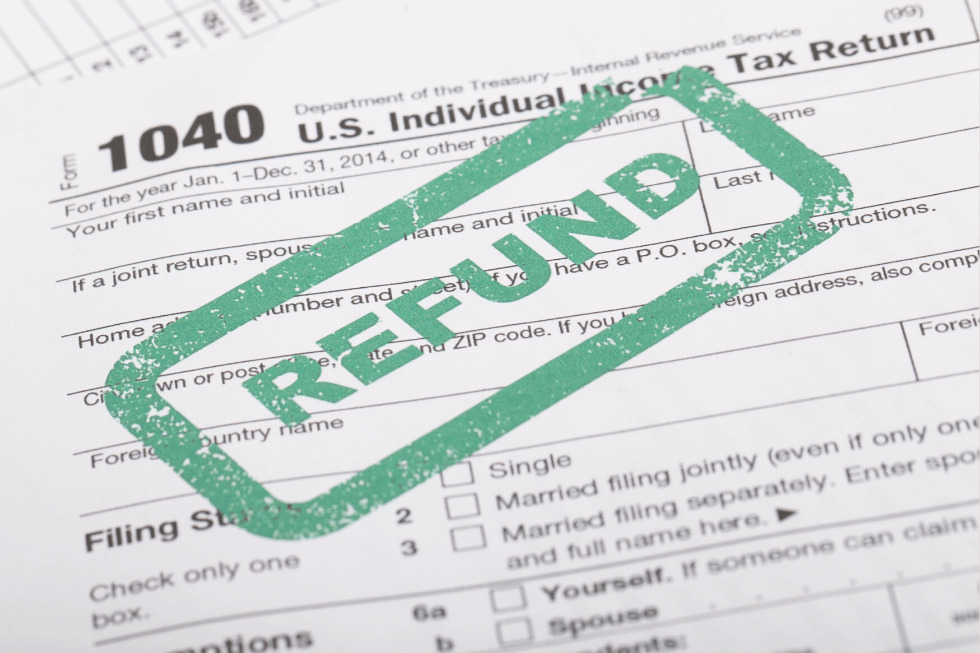Do you instinctively cringe at the thought of budgeting?
If so, you’re not alone. Only 1 in 3 Americans have a household budget. And I’ve got both good news and bad news for you on this front…
First, the ‘bad’ news. If you want the dream house, car, vacation, wedding, financial peace of mind, early retirement, retirement-period or <insert your own ‘dream thing’ here>, there is no avoiding it. You will need to learn to take control of your money.
The good news?
It doesn’t need to be painful, and it can even *gasp* turn into something you look forward to with a small shift in mindset and a few easy steps you can start today.
By the time you finish reading this, you will have a crystal clear picture of what you want to achieve with your money, tactical steps to put a game plan in place and motivation to keep you moving consistently towards your financial goals.
Not bad for a quick internet read, huh? ?
Step 1: Why The Heck Should You Even Bother With a Budget? Really.
‘Budget’ is often thrown around like a four-letter word. We moan and groan because we think we’re going to suffer and be restricted from enjoying life.
Look, the truth is that you are a grown adult. You do not have to do anything you don’t want to do. If you create a budget because you think this is something you should do, you will fail. To be successful, your going to have find the motivation to want to budget by focusing intently on your end goal.
The reality is…
Living on a budget does not mean that you will have to sacrifice those cute jeans you’ve got held in your online shopping cart or that you will have to stay home with Netflix, popcorn and Two Buck Chuck while all your friends go out for a fancy dinner in the city (though to be honest, that doesn’t sound too bad to me). Instead, when you take control of your money and set a budget, you will give yourself the freedom and permission to direct your money towards those things guilt-free.
A budget shows you how to get the things you want most and what the trade-offs will be. And maybe, just maybe, when you look at the trade-offs, your priorities might change. But they don’t have to. The choice is yours.
Budgeting allows you to control where your money goes, channeling it to those things most important to you—whatever they may be.
Instead of thinking of your budget like a restricting plan, think of it like a liberating ‘do-what-you-want’ plan.
 So what is it exactly that you want? Spend a little time daydreaming about what is important to you. Write down everything that comes to your mind.
So what is it exactly that you want? Spend a little time daydreaming about what is important to you. Write down everything that comes to your mind.
Do you want the peace of mind of knowing you have an emergency fund in place? Do you want to own your own home? Do you want to travel the world? Do you want to start a family someday? After you have written down everything you can possibly think of, go through your list and identify the top 1-3 things that are MOST important to you.
A picture is worth a thousand words.
Once you identify your ‘why’ or ‘whys’ for making a budget, find an image that represents this for you. Rip an image out from a magazine and put it somewhere you will see every day: on your refrigerator or by your bathroom mirror as you get ready in the morning. Or go digital and find an image on Pinterest or somewhere else online to save as your desktop background or on your phone home screen.
Seeing your goal throughout the day will remind you again and again what you are working towards, and this will go a long way in helping you develop the follow-through to make and stick with a plan.
Step 2: Put Pen to Paper
Having a budget in your head won’t work. Winging it won’t work.
If you are serious about getting control over your financial situation, you need to put it in writing. There is no way to fudge the numbers or guesstimate your spending in a way that will allow you justify ‘just this one purchase’ once you put pen to paper.
Building a budget is not rocket science, but building a budget you can, and will, actually stick to takes some finessing. If this is your first budget, it is going to take several months to dial it in. Be patient with yourself. There are expenses you won’t think of the first time you do this. The actual amount you spend may be very different from what you think when you take your first (or second or third) stab at it.
This is normal. Don’t give up. Just keep at it.
Nobody has to see this but you, so be honest with yourself. The more realistic you are, the more you are setting yourself up for success
To help you put the tactical steps of how to budget in place, I’ve put together a free budget template for you.
DOWNLOAD YOUR BUDGET PLANNING WORKSHEET
A few tips on how to budget effectively.
- Enter your expenses in this order
- Fixed expenses – Things that are the same and non-negotiable every month like rent, utilities
- Debt – If you have debt, make sure you have at least $1K in savings first and then pay off all debt as fast as humanly possible and skip Long-Term Savings until your debt is 100% gone.
- Long-Term Savings – 10-15% of your take home pay (After all your debt is paid off)
- Variable living expenses – Food, gas, your hair stylist, daily latte habit, Sunday Funday brunches, and *dream-thing* goals (Playa del Carmen here I come!)
- Always budget to zero
Make sure every dollar you earn is accounted for. If you don’t know where to put it, add it to your debt or long-term savings.
- Recognize that cash flow varies by month
Think car insurance, birthdays, vacations, etc. Account for these bigger expenses by spreading the costs out monthly. (For example, if your car insurance is $600 every 6 months, budget for this by saving $100 each month towards it.)
Step 3: Set Yourself Up For Success
You’re on your way! Now that you’ve got a budget in place, it’s time to give you tools to help you actually stick to it.
There are two main ways you can do this.
The first option, and the one I recommend everyone start with for at least a few months while you are building new spending habits, is the Cash Envelope System.
If pulling out your point-earning credit card or swiping Apple Pay is second nature to you, I especially recommend you adopt the envelope system for 2-3 months as it will help you become much more in tune with your spending habits.
With the envelope system, let’s say you’ve budgeted $250/month for groceries. At the beginning of the month, you’ll withdraw $250 in cash and place it in an envelope labeled ‘groceries’. Any groceries purchased must be paid for out of this envelope. When the money is gone, you are done spending for the month.
Let me tell you… this ‘cash-in-hand’ method is very effective at training your brain to think twice before every single purchase.
The second way to stay on top of where you are with your budget is mobile friendly, but requires quite a bit more self-control.
Mint was one of the first of many budgeting apps to securely sync multiple bank accounts (savings, credit, debit, investment accounts) in order to give you a holistic view of your financial situation and track all your spending in one place. I’ve used Mint for years and love it, but if you have another budgeting app you prefer, go for it. The important thing is that you use it daily.
Whichever budgeting app you sue, I recommend you use credit/debit cards for ALL your spending so that your purchases automatically flow into the system. If you spend cash, you’ll have to remember to manually add the transaction.
The initial setup for these online tools will take some time, but once set up, all your spending is automatically tracked for you. You can event see your spending habits with fancy graphics.

Screenshot from Mint
Step 4: Weekly Check-Ins: You Can DO This
Have you ever decided to go on a diet (or a cleanse for my fellow California peeps) and done all the work of researching the diet/cleanse, stocking up on the right foods and supplements, making a big announcement on social media, and then…not too far in, something comes up. A dinner out. A special event. A Wednesday night. And you cave. “Just this once,” you tell yourself knowing full well that it’s a slippery slope and then you basically half-ass the rest of your diet/cleanse, or just abandon it altogether?
The reason we do that is because we don’t have any real accountability.
When it comes to budgeting, you want to set up a system to hold yourself accountable.
Once a week, block a 20-minute window off on your calendar.
20 minutes. That’s it.
How to schedule your weekly budget check-in:
- Pour yourself a coffee and crank your favorite tunes
I usually do this Saturday mornings, but vino is also acceptable for an evening session. No judgments here! The point is to make an environment that you can look forward to.
- Visualize your ‘dream thing’
Pull out our picture of your ‘dream thing’ and look at it. Really take time to think about this, and imagine that you have your ‘dream thing’ right now. How do you feel? Motivated?
- Take stock of your budget, bucket-by-bucket, to see where you stand.
If you are using the cash envelope system, take inventory of each envelope to see how much you have spent and how much you have left.If you are using a mobile or online budgeting app, review your last week’s transactions to ensure the system categorized them correctly. When you are just getting started, the system will take some time to learn where to put things.
For any buckets in which you are quickly approaching your limit: Make a plan on how you will adjust your spending for the remainder of the month to ensure you stay within budget. Instead of going out for dinner, perhaps you host a pot-luck dinner party or game night at your place? Or organize a group hike? You still get to spend QT with your favorite people, and you can reduce your spend at the same time. Be creative. Think of these moments as opportunities to try new ways of doing things rather than the status quo.
For any buckets that you may have gone over: Think about what caused you to go over. First ask yourself if you set a realistic target? The first few months you will be figuring it out so don’t beat yourself up if you were off base with your guesstimates.
If your target was realistic, but you just blew it, give yourself a break. There is no sense in feeling shame or guilt. Take it as a learning lesson and move on. Ask yourself what you could you have done differently to stay within budget and make a plan so that you will be better equipped next time you face similar situations.
Then think of any adjustments you might be able to make in other areas of your budget. Can you reduce your grocery bill to make up for one too many happy hours? Can you push your haircut a few weeks? Make sure you do not reduce your savings or debt reduction. These are the two areas that will make you financially free if you stick to them.
Step 5: Wash, Rinse Repeat
Well, my friend, you may not want to hear this, but you already know it to be true. Taking control of your money is not a one time set-it-and-forget-it event of making a budget. It is the day to day living and spending choices we make. Every. Single. Day.
Don’t wait until you feel lost or out of control with your money again to start back at step one and work your way through these five steps. Every week, go through these five steps to keep your goals top of mind and your money in your control.
Now that you can see there is no rocket science required to make and follow your own budget, it’s time to start you on your own journey.
The “secret sauce” to budgeting is simply being in action.
So start right now. Pause for a moment and reflect again on why it is important to you to be in control of your money. What do you want to achieve by going through the process of budgeting? What is most important to you when it comes to your financial situation?
Now, visualize that you have already achieved this.
What does your life look like once you’ve gotten what’s important to you… How do you feel? Do you feel lighter than before?
Money is an empowering tool if you learn to master it, instead of vice versa.
Now have the basics of how to budget and you know the steps to start your own plan, grab your free budget worksheet and go forth and prosper. It’s time for you to take control of your money!
Please comment below if any of these tips worked especially well for you or to share any other tips you’ve used to take control of our money.



